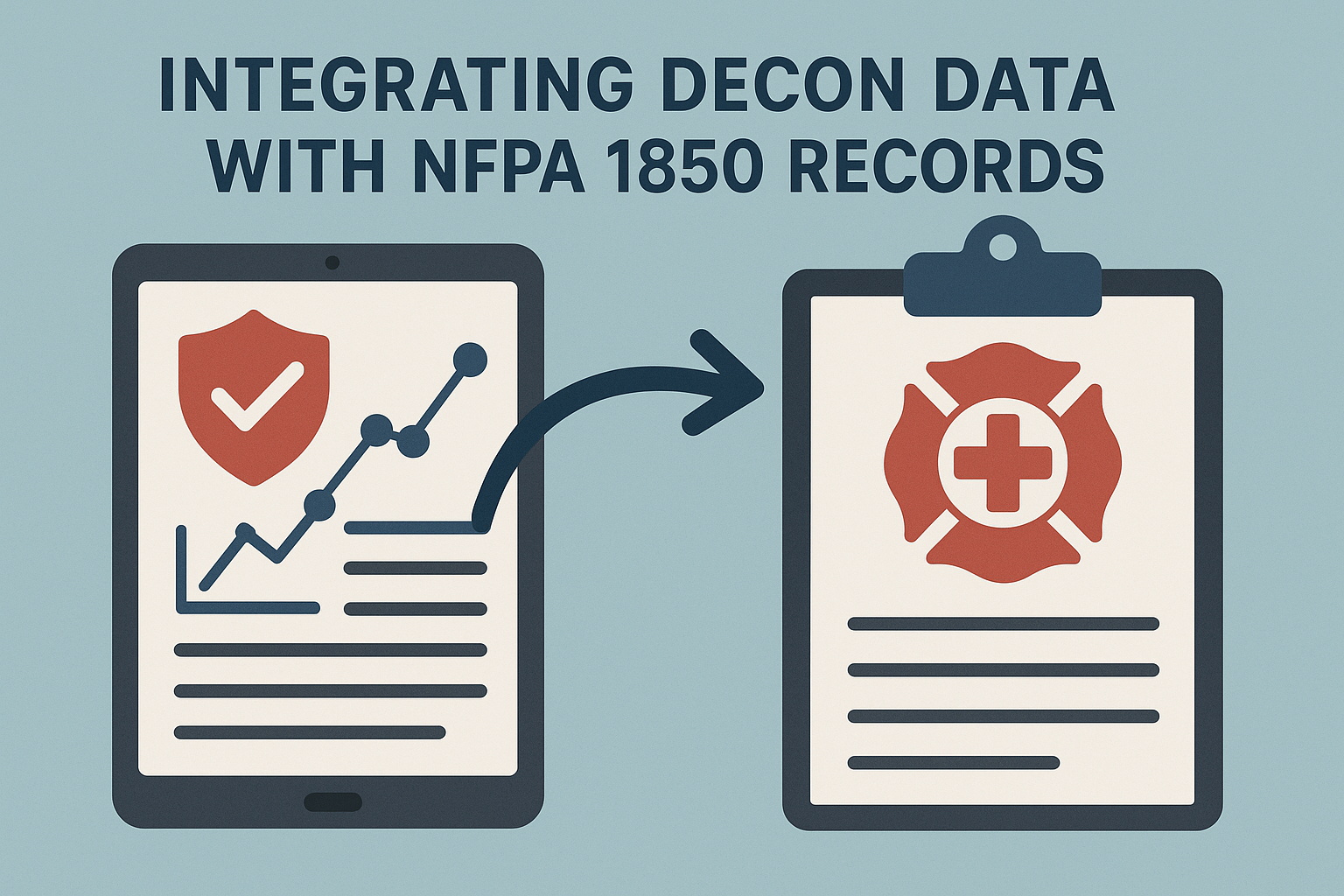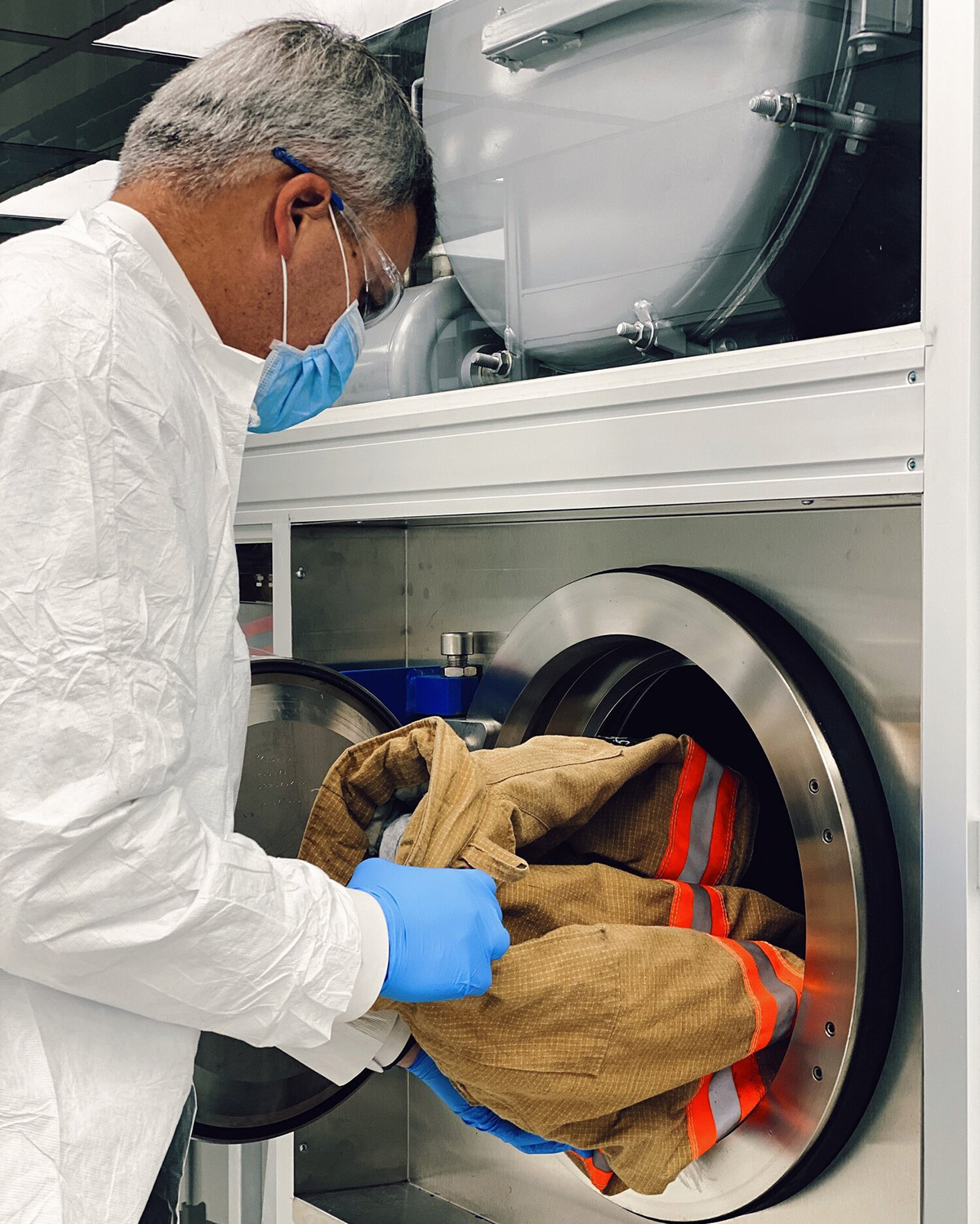By: Emergency Technical Decon Team
Firefighters rely on their turnout gear as the first line of defense against heat, flames, and chemical exposure. But keeping that gear clean, safe, and compliant also requires accurate data. With the release of NFPA 1850, which consolidates and updates previous PPE care standards, the focus on comprehensive recordkeeping has never been greater. Integrating decon data into NFPA 1850 records ensures that every jacket, hood, and pair of pants not only meets compliance but also offers reliable protection for the firefighters who depend on them.
What is NFPA 1850 and Why Does It Matter?
NFPA 1850 is the latest standard governing the selection, care, and maintenance of structural and proximity firefighting PPE. It combines the previous NFPA 1851 (maintenance) and 1971 (design and performance) standards into a single, streamlined standard. This unified approach emphasizes gear lifecycle management, requiring departments to document:
- Every cleaning and decontamination event.
- Inspections for wear, damage, or contamination.
- Repairs and gear retirement dates.
In short, NFPA 1850 shifts departments toward a data-driven approach to gear safety. Recordkeeping is now a requirement for protecting both firefighter health and departmental liability.
The Role of Decon Data in Compliance
Decontamination data is a record of how well your gear is being cared for and how contaminants are being removed. Firefighters are exposed to a wide range of harmful substances, including PFAS, VOCs, hydrocarbons, and heavy metals, which can accumulate over time if not properly addressed.
By integrating decon data into NFPA 1850 records, departments can:
- Track chemical removal efficiency from each cleaning session.
- Identify high-risk gear that may require replacement sooner.
- Document compliance for audits or insurance claims.
- Support firefighter health monitoring by demonstrating a proactive approach to exposure reduction.
Challenges with Traditional Recordkeeping
Historically, many departments relied on paper logs, binders, or basic spreadsheets to track cleaning and inspection data. While these methods can work, they’re prone to error, incomplete information, and lost records. When an audit or gear failure occurs, having incomplete records can create serious challenges for proving compliance.
Traditional recordkeeping also fails to provide real-time visibility into gear status. Without detailed logs, departments may unknowingly use gear that is past its recommended cleaning cycle or due for inspection, increasing both risk and liability.
How to Integrate Decon Data with NFPA 1850 Records
Digital recordkeeping systems are the future of compliance, especially with the added demands of NFPA 1850. These systems automatically record decontamination details, including:
- Date and method of cleaning (e.g., Liquid CO2+).
- Chemicals or residues removed.
- Gear inspection results pre- and post-cleaning.
ETD’s advanced decontamination services simplify this process by providing digital cleaning reports that can be directly uploaded into department records. This ensures accuracy, transparency, and compliance without adding extra administrative burden.
Advantages of Digital Decon Records
Integrating decon data with NFPA 1850 records provides benefits beyond compliance:
- Full Lifecycle Tracking: Every cleaning, inspection, and repair is documented, allowing departments to make informed decisions about when to retire gear.
- Streamlined Audits: Digital records can be shared instantly during NFPA audits or insurance reviews, saving time and effort.
- Reduced Liability: Accurate logs prove that departments are following industry standards to protect firefighter health.
- Real-Time Insights: Department leaders can quickly view which gear is operational, which needs cleaning, and which is nearing end-of-life.
How ETD Supports NFPA 1850 Compliance
At Emergency Technical Decon (ETD), we combine advanced Liquid CO2+ cleaning technology with detailed recordkeeping tools to help departments meet the rigorous requirements of NFPA 1850. Our process includes:
- Validated chemical removal reporting, including PFAS and other toxic residues.
- Digital logs for every piece of gear processed.
- Integration support for department-wide gear management systems.
By partnering with ETD, departments gain not only superior decontamination but also the data they need to keep firefighters safe and compliant.
Why Data Integration is the Future of Gear Safety
In an era where firefighter health risks—particularly cancer—are under the microscope, data-driven PPE management is the next step in proactive safety. Integrating decon data with NFPA 1850 records ensures gear isn’t just cleaned, but tracked, analyzed, and verified for ongoing protection.
Ready to bring your gear management into full NFPA 1850 compliance? ETD provides advanced cleaning services and digital reporting tools that make recordkeeping effortless. Request service today and see how we can streamline your decon strategy.



